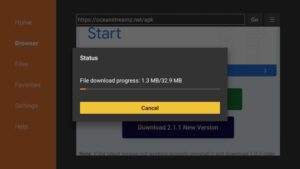How do you Wave on Facebook
In the vast ocean of social media, where interactions are often fleeting and impersonal, gestures play a significant role in conveying emotions, building connections, and maintaining relationships. Among the plethora of digital gestures, the Facebook wave stands out as a simple yet powerful tool for initiating contact, expressing acknowledgment, or simply spreading positivity. In this digital age, understanding the nuances of waving on Facebook can transform your online interactions, making them more meaningful and engaging.
The Evolution of Waving
Waving on Facebook has evolved significantly since its inception. Initially introduced as a straightforward gesture to say “hello” or “hi” to friends, it has now become a versatile tool for expressing a range of emotions and intentions. What once started as a basic hand wave has now expanded to include various emoji-based waves, offering users a broader spectrum of expression.
The Purpose of Waving
At its core, waving on Facebook serves as a virtual handshake, a friendly gesture to initiate or acknowledge a connection. It breaks the ice in digital conversations, signaling openness and willingness to engage. Whether you’re reconnecting with an old friend, congratulating someone on an achievement, or simply reaching out to start a conversation, a well-timed wave can set the tone for a positive interaction.
Understanding the Different Types of Waves
- The Classic Wave: The traditional hand wave, denoted by a waving hand emoji, remains the most recognizable form of waving on Facebook. It’s casual, friendly, and universally understood, making it suitable for various situations.
- The Emoji Wave: Facebook offers a plethora of emojis to convey different emotions and sentiments. From the cheerful wave to the animated wave, there’s an emoji wave for every occasion. Experiment with different emojis to add a personal touch to your waves.
- The Wave Combo: Sometimes, a single wave isn’t enough to convey your message adequately. In such cases, combining multiple waves or alternating between different wave emojis can amplify your expression. For instance, a wave followed by a thumbs-up or a heart emoji can convey enthusiasm or appreciation.
When to Wave
- Initiating Contact: When reaching out to someone for the first time or reconnecting after a long hiatus, a wave serves as a friendly icebreaker. It signals your intention to engage and opens the door for further communication.
- Expressing Gratitude: Did someone comment on your post, share your content, or offer words of encouragement? A wave is a simple yet effective way to express gratitude and show that you appreciate their interaction.
- Acknowledging Messages: In a busy digital world, it’s easy to overlook messages or comments. A quick wave can signify that you’ve seen the message and acknowledge the sender, even if you don’t have time to respond immediately.
Etiquette and Best Practices
- Be Genuine: While waving on Facebook is a casual gesture, sincerity matters. Avoid using waves indiscriminately or as a substitute for genuine engagement. Be authentic in your interactions.
- Respect Boundaries: Not everyone may be comfortable with receiving waves, especially from strangers or acquaintances. Respect others’ boundaries and avoid overusing the wave feature, particularly in professional or formal settings.
- Mind the Context: Consider the context and relationship dynamics before waving. While a wave may be appropriate for friends or acquaintances, it might come across as insincere in more serious or intimate conversations.
The Impact of Waving
Beyond its superficial appearance, waving on Facebook holds profound significance in fostering connections and nurturing relationships. In a world where digital interactions often lack depth and sincerity, a simple wave can bridge the gap, reminding us of the human behind the screen.
Conclusion
In the digital landscape of social media, where words often fall short, gestures like waving on Facebook serve as essential tools for communication and connection. By mastering the art of waving, you can enrich your online interactions, cultivate meaningful relationships, and spread positivity in the vast expanse of the internet. So, next time you log into Facebook, don’t hesitate to wave—it might just be the start of a beautiful connection.








